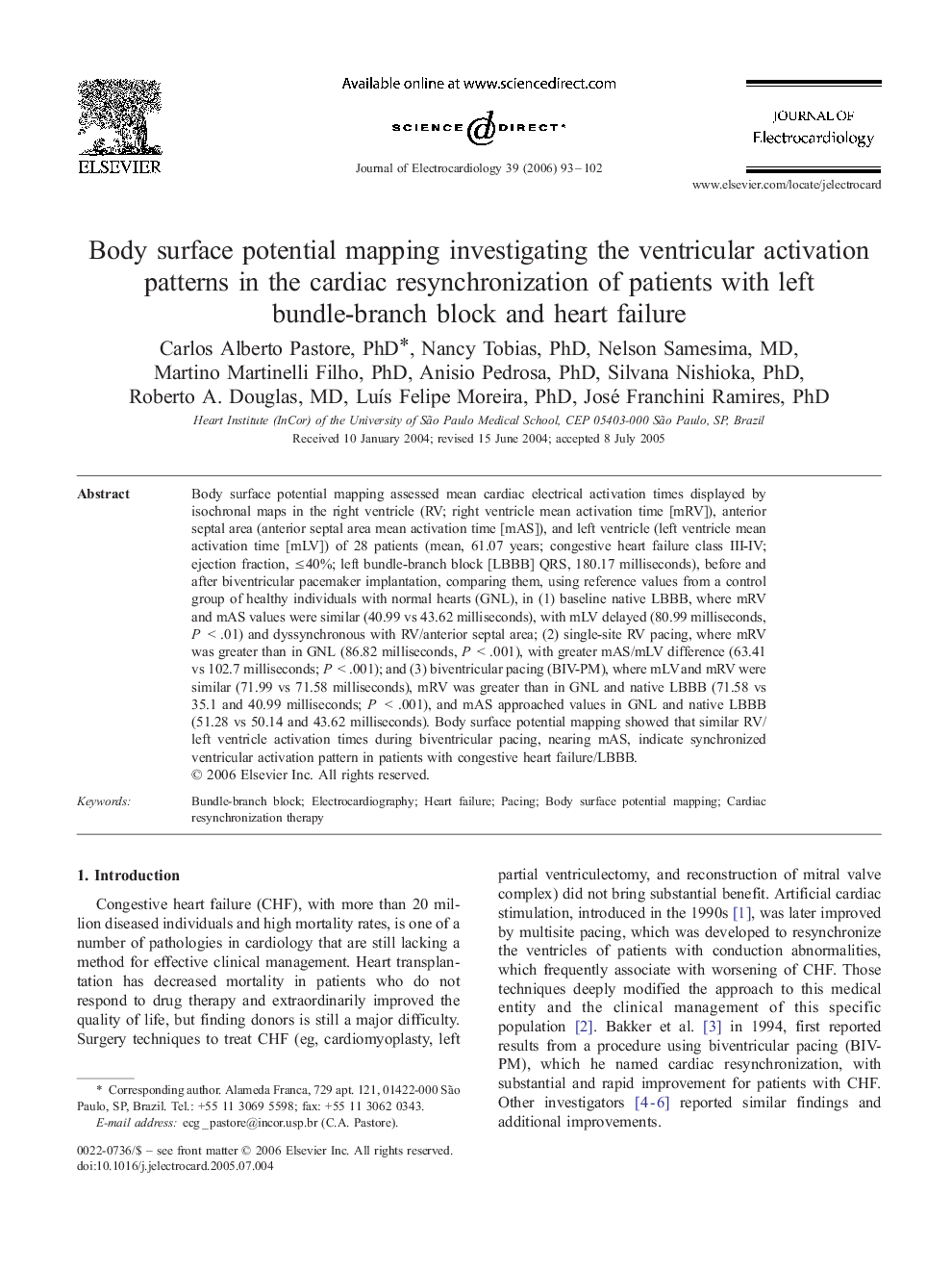| Article ID | Journal | Published Year | Pages | File Type |
|---|---|---|---|---|
| 2969081 | Journal of Electrocardiology | 2006 | 10 Pages |
Body surface potential mapping assessed mean cardiac electrical activation times displayed by isochronal maps in the right ventricle (RV; right ventricle mean activation time [mRV]), anterior septal area (anterior septal area mean activation time [mAS]), and left ventricle (left ventricle mean activation time [mLV]) of 28 patients (mean, 61.07 years; congestive heart failure class III-IV; ejection fraction, ≤40%; left bundle-branch block [LBBB] QRS, 180.17 milliseconds), before and after biventricular pacemaker implantation, comparing them, using reference values from a control group of healthy individuals with normal hearts (GNL), in (1) baseline native LBBB, where mRV and mAS values were similar (40.99 vs 43.62 milliseconds), with mLV delayed (80.99 milliseconds, P < .01) and dyssynchronous with RV/anterior septal area; (2) single-site RV pacing, where mRV was greater than in GNL (86.82 milliseconds, P < .001), with greater mAS/mLV difference (63.41 vs 102.7 milliseconds; P < .001); and (3) biventricular pacing (BIV-PM), where mLV and mRV were similar (71.99 vs 71.58 milliseconds), mRV was greater than in GNL and native LBBB (71.58 vs 35.1 and 40.99 milliseconds; P < .001), and mAS approached values in GNL and native LBBB (51.28 vs 50.14 and 43.62 milliseconds). Body surface potential mapping showed that similar RV/left ventricle activation times during biventricular pacing, nearing mAS, indicate synchronized ventricular activation pattern in patients with congestive heart failure/LBBB.
